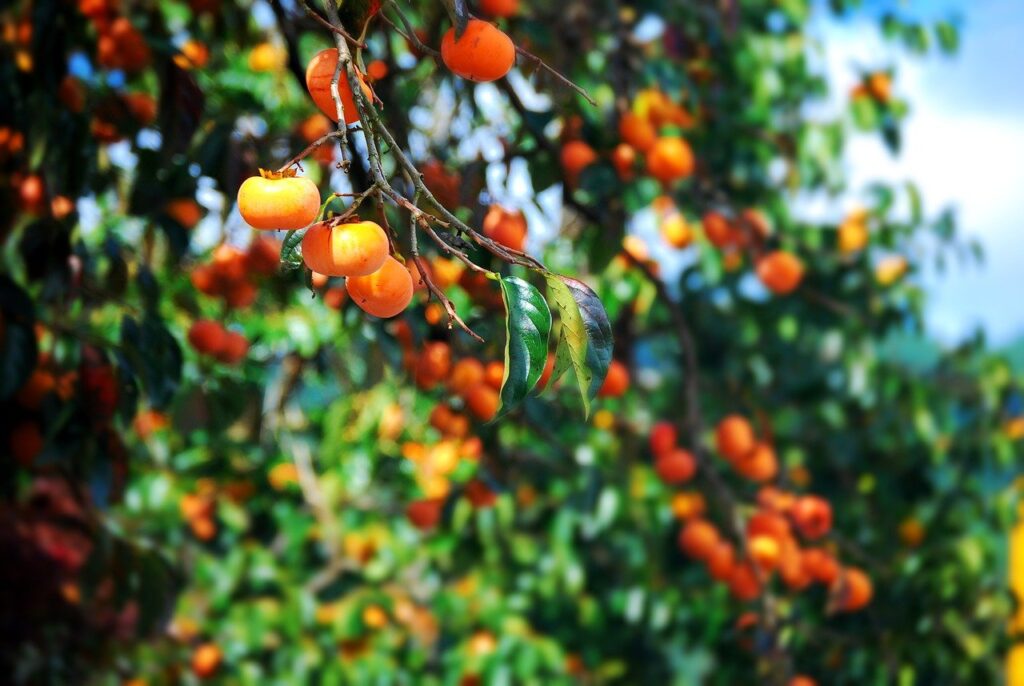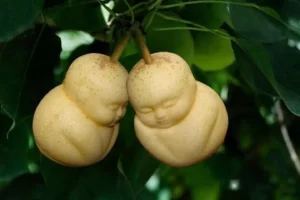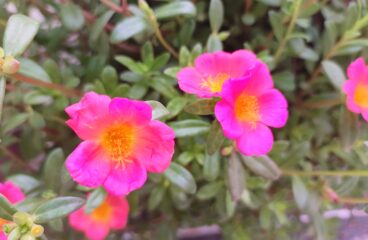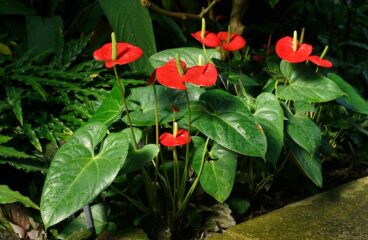

Persimmon – How to Grow Seeds at Home | Good Soil Nature
Welcome to GardenOnTop.com. In the post, we will know all about the Persimmon fruit tree and identify something new about the fruit…
- About persimmon tree
- How to propagate seeds at home with good soil media
- How to care whole life of a persimmon tree
- Fruiting period & harvesting time
- Top 7 benefits of fruit
- FAQ (Frequently Asked Questions)
Persimmon – Rare Fruit Tree
Persimmon: One of the rarest fruit trees or fruits similar to tomatoes. Easy to grow in homes and gardens. The mostly cultivated country is China. It is also known as common persimmon and the scientific name is Diospyros virginiana it belongs to the Ebenaceae family.
- Mature size of a persimmon tree is 20 to 50 feet tall.
- Leaves grow up to 2 to 5 inches tall and 1/5 inch wide and the leaves color is grassy.
- Persimmon tree blooms two types of flowers, female and male.
- Male flowers are pinkish in colour with bunches.
- Female flowers are whitish-creamy in color and bloom separately.
- Plants begin to flower or bear fruit within a year.
- The taste of the fruit is mildly sweet when fully ripe.
- Starting price of persimmon fruit is 80+ rupees or 250gm.


Seeds Availability and Propagation
How to Propagate Seeds with Soil: Early winter is the best time for the seedling. Seeds are easily available in plant shops and online shops like FLIPKART, AMAZON…etc. If you are not aware of finding seeds, let us take a persimmon fruit and remove the fleshy part and clean the seeds properly with tissue paper or a towel. Keep the seeds in deep water then fridge or cold areas for 3 to 4 days only. Remove it then clean the seeds properly.
Prepare a Good Soil Type: Good soil type is a powerful factor when you sow seeds. For best growth, good soil type is most important. For persimmon seedling…
- Take a ceramic flower pot that has a good depth and shape.
- Normal garden soil + bone meal + Seaweed + Good vermicompost (trust Basket or booster).
- Mix it thoroughly till the soil is well drained.
- Fill it in a container or pot and make small holes or pits.
- Take out the persimmon seeds and put them into those pits and cover them properly with the same soil media.
- Now, keep the pot in a semi-shade location (sunlight).
- Germination begins within 20 days from seeds and small leaves are formed from seeds.
- Transplantation is best for sharp growth.
Managing Whole Life of Persimmon
- Fertilization: Fertilization and mulching are necessary during the growing season. For best composition, you can add 2 to 3 fists of vermicompost, bone meal, and good quality seaweed. Mix it well and draw it into the pot. Give water thoroughly and place it in full sunlight locations. These composts are easily available in online shops or you can visit a nearby plant nursery. Best time for composition is early winter or before the summer time. Don’t add too much compost.
- Watering Time: Adding too much water causes root rot problems as well as root fungus. So, don’t overwater or before the water time, check the top soil of moisture with your fingertips. Apply coco-peat during summer as coco-peat retains moisture in the soil. Plants should be hydrated in the summer time. For simple and easy watering, use a spray water can. Give water once a week in winter time for small and large persimmon plants.
- Temperature or Sunlight Time: All plants should be placed in full sunlight. Just, you need to maintain the temperature in winter time or heavy temperature. For best growth keep it at 15°C to 28°C.
- Cutting Period: Cutting is necessary but not too much. Just cut out the unnecessary leaves, wilted flowers, dried leaves and branches…etc. Pinch out the head of stems and weeds and baby plants near the roots. Do it once a year but before the growing season and add a few compositions. While cutting, wear hand gloves and use cutting tools like scissors, pruners, and hedge shears.
Caring Tips from Diseases: You need to be aware of the diseases and insects that can affect small plants. If any type of disease or pests thrive on plants for a long time, your plants will not grow and plants may die soon. Therefore, use insecticide on the entire plant and if root diseases occur, then use fungicide liquid with water. Pesticide and fungicide liquid are easily available in online shops or you take benefit by visiting nearby plant nurseries. Starting price of these is 100+ rupees per packet (100gm).


Fruiting Period & Harvesting Time: If the trees and plants are taken care of, then fruits start appearing within a year. The time of fruiting is in the summer but before the fruit blossoms, the flowers start to bloom on the trees. Flowers are small with clusters of flowers. White creamy flowers bloom on the persimmon tree or new buds open like roses. You can harvest the fruits after they are ripe. The fruits are dark purple to black with ripeness (up to 2 cm long) when mature
Top 7 Benefits of Fruit: Let us know about the top 7 healthiest benefits of persimmon fruit. You have to include it in your diet plan twice a week.
- Enhance your energy and boost your stamina.
- It has several types of vitamins A, and C, fibre, and antioxidant properties.
- Improves eyesight and vision.
- May lower the risk of cancer.
- Improves digestion system.
- Manage blood sugar (diabetes level).
- May modulate blood circulation.


Frequently Asked Questions
There are a lot of questions about the fruits of persimmons, as well as about planting, fruiting and much more. The visitors can save time and find their respective queries. If the query does not apply here, please go to the contact us section and write your query regarding any post. Let’s explore some queries…
Yes, you can. Visit the plantation section.
Visit the seedling section.
Summer is the best time for seedlings with good compost.
After mature size (up to 2 cm long) or fruits appears dark purple to black.
Need to take care of watering, composition, and well temperature. Visit the caring section.
Just cut the slices of fruit and remove the seeds and eat them.
Seeds are avails in online shops & local plant nurseries.
Fruits have lots of benefits, it has vitamins, fibre, and antioxidant properties. Improves eye vision, maintains diabetes level…etc. See the benefits section (more info).
Normal Garden soil, bone meal, seaweed, and vermicompost.
If you like this post don’t forget to share it with your friends and relatives and also subscribe to my newsletter for instant updates 🙂




















































































